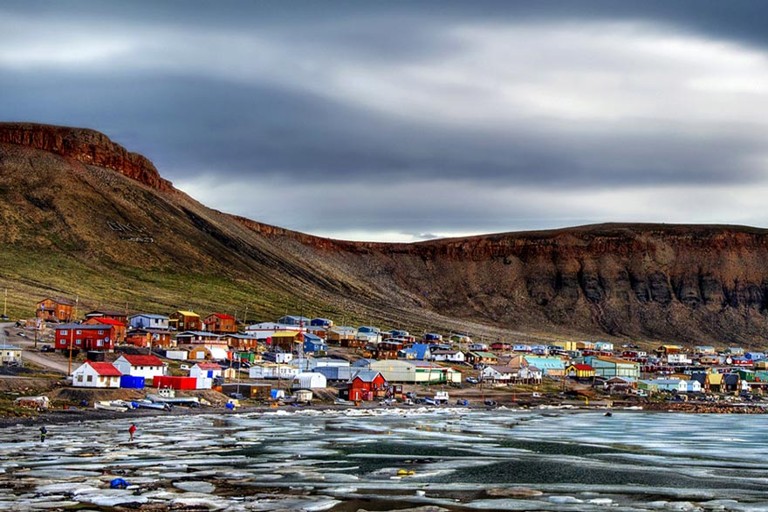On a frozen shoreline near Iqaluit, as the sun hovers just above the horizon, photographer Noah Ikkit peers through his lens and captures a moment that speaks of silence, endurance, and beauty. His photographs, celebrated around the world, offer a window into Arctic life—its rhythms, people, and the fragile balance between tradition and change. For Ikkit, photography is not just art; it’s storytelling through light and memory.
Born and raised in Nunavut, Ikkit began taking photos with a secondhand camera he found at a community center when he was sixteen. “I wanted to show people what the North really looks like,” he says. “Not just snow and isolation—but community, laughter, and resilience.” His early work, shared on social media, quickly gained attention for its authenticity and depth. Today, his exhibitions have traveled from Yellowknife to Paris.
Ikkit’s photographs capture the everyday—hunters preparing their tools, children playing on the ice, elders sewing traditional garments by lamplight. Each image conveys a profound respect for the land and its people. “The North has its own kind of light,” he says. “It’s soft but strong, like the people who live here.” That light, both literal and metaphorical, has become a signature of his work.
His success comes at a time when Indigenous creators across Canada are reclaiming visual storytelling to challenge stereotypes and preserve heritage. Through workshops and mentorships, Ikkit now teaches young Inuit photographers to use cameras as instruments of voice and vision. “We don’t just take pictures,” he explains. “We take care of stories.”
In 2024, Ikkit launched the Arctic Lens Project, an initiative that provides cameras and training to youth in remote communities across Nunavut and the Northwest Territories. The program encourages participants to document their own lives, creating digital archives that reflect their perspectives. The initiative has already produced exhibitions in local schools and galleries, inspiring a new generation of storytellers.
Climate change also figures prominently in Ikkit’s portfolio. His ongoing series 'Melting Edges' chronicles the rapid environmental transformations occurring in the Arctic—retreating ice, shifting wildlife, and communities adapting to new realities. “It’s not about despair,” he insists. “It’s about witnessing. I want the world to see what we stand to lose, and what we’re fighting to protect.”
Critics and curators praise Ikkit’s work for its emotional clarity and cultural importance. The National Gallery of Canada recently acquired several of his photographs, marking a milestone for Indigenous representation in contemporary art. Art historian Claire Lemieux describes his images as “quiet revolutions—portraits that demand empathy rather than pity.”
As his fame grows, Ikkit remains deeply connected to home. He continues to live in Iqaluit, traveling frequently but always returning to the tundra’s calm. “This place gives me strength,” he says, looking out over the frozen bay. “I take pictures so people can see the beauty of the North. But really, it’s the North that keeps me seeing.”
